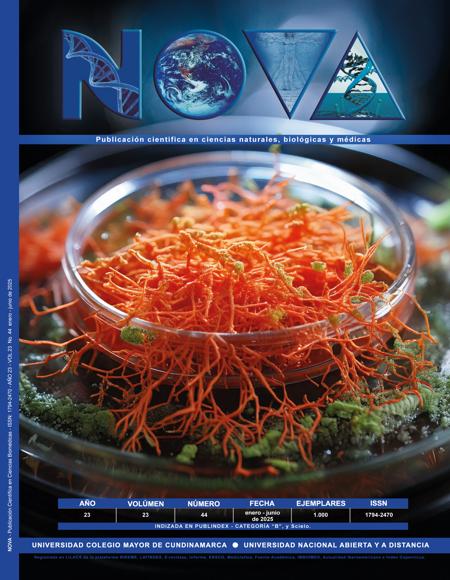Clinical case: Giant cell tumor of the distal third of the radius. Diagnosis, surgical treatment
Caso clínico: Tumor de células gigantes de tercio distal de radio. Diagnóstico, tratamiento quirúrgico

This work is licensed under a Creative Commons Attribution-NonCommercial-ShareAlike 4.0 International License.
Show authors biography
The distal third of the radius is the most common location for giant cell tumors (GCTs) in the upper extremity. This case presents an unusual clinical course, characterized by aggres- sive progression and atypical patterns of recurrence. The complexity of the case highlights the biological variability of GCTs and underscores the need for conservative, innovative therapies that prioritize limb preservation and extended follow-up beyond standard pro- tocols. Treatment must balance the goals of functional preservation with the prevention of recurrence and complications. Given the lack of clear standards for surgical treatment, multiple techniques have been described. This study provides an overview of the eva- luation of GCTs in the distal radius, analyzes therapeutic options, and offers an updated summary of outcomes. Surgical management should consider tumor grade, joint involve- ment, and individual patient factors. Options include intralesional curettage or en bloc resection with reconstruction. Regarding reconstruction, joint-preserving procedures for the radiocarpal articulation are preferred. Grade 1 tumors (according to the Campanacci classification) can be successfully treated with joint-preserving techniques, whereas for grade 3 tumors, joint resection is recommended to prevent recurrence. The management of grade 2 tumors remains controversial. When articular surface preservation is feasible, intralesional curettage with adjuvants has shown good outcomes, while en bloc resection is reserved for cases where aggressive curettage is not possible.
Article visits 35 | PDF visits 23
Downloads
- Afsoun, s. Saied, S.A., Amir, N., Hamed, J. (2018). Resección en bloque de un tumor de células gigantes que causa colapso vertebral cervical Revista asiática de neurocirugía, 13 (1), pp. 150-153, 10.4103/1793-5482.181136 https://www.thieme-connect.de/products/ejournals/pdf/10.4103/1793-5482.181136.pdf
- Tahir, I. Andrei, V. Carbonero, R. (2022). Tumor maligno de células gigantes de hueso: una revisión de las características clínicas, patológicas y de imagen Radio esquelético. Doi: 10.1007/s00256-021-03913-6
- Li, H. Gao. J. Gao, Y. Lin, N. Zheng, M. (2020). Denosumab en un tumor óseo de células gigantes: estado actual y dificultades Frente Oncol, 10, artículo 580605, Doi: 10.3389/fonc.2020.580605
- Montgomery, C. Sofá, C. Emory, CL Nicholas, R. (2019). Tumor óseo de células gigantes: revisión de la bibliografía actual, evaluación y opciones de tratamiento J Knee Surg, 32 (4) (2019), págs. 331-336, 10.1055/s-0038-1675815 https://www.thieme-connect.de/products/ejournals/abstract/10.1055/s-0038-1675815
- Mavrogenis, A. Igoumenou, V. Megaloikonomos, P. Panagopoulos, G. Papagelopoulos, P. Soucacos, P. et al. (2017). Revisión del tumor óseo de células gigantes SICOT-J, 3, p. 54, 10.1051/sicotj/2017041
- Todi N, Hiltzik DM y Moore DD. (2024). Tumor de células gigantes del hueso y osteoartritis secundaria. Heliyon. 10(e30890) https://pubmed.ncbi.nlm.nih.gov/38807896/
- Jha Y y Chaudhary K. (2023). Tumor óseo de células gigantes: una revisión exhaustiva de la patogenia, el diagnóstico y el tratamiento. Cureus. 15(e46945)2023.
- Ratnagiri R y Uppin S. (2023). Mutación H3F3A como marcador de tumor maligno de células gigantes del hueso: Informe de un caso y revisión de la literatura. J Cancer Res Ther. 19:832–834. 2023.
- Sahito, B. Alí, S. Majid, B. Katto, M. Jatoi, A. Jahanzeb, S. et al. (2022). Resultados del legrado extendido con aloinjerto óseo y sin este para los tumores de células gigantes de grado II alrededor de la rodilla. Un estudio comparativo retrospectivo Revista brasileira de ortopedia, 58 (1) (2022), pp. 141-148, 10.1055/s-0042-1742603 https://www.thieme-connect.de/products/ejournals/pdf/10.1055/s-0042-1742603.pdf
- Basu Mallick, U. Chawla. S. (2021). Tumor óseo de células gigantes: una actualización Curr Oncol Rep, 23 (5) (2021), p. 51, 10.1007/s11912-021-01047-5 https://link.springer.com/content/pdf/10.1007/s11912-021-01047-5.pdf
- Cowan, R. Singh, G. (2013). Tumor óseo de células gigantes: una perspectiva de la ciencia básica Hueso, 52 (1) (2013), págs. 238-246, 10.1016/j.hueso.2012.10.002 https://www.sciencedirect.com/science/article/pii/S8756328212013002
- Singh, S. Chawla, N. Chawla, S. (2015). Tumor óseo de células gigantes: opciones de tratamiento y función del denosumab Biol Targets & Ther, 9, pp. 69-74, Expte.: 10.2147/BTT. S57359 https://www.indianjournals.com/ijor.aspx?target=ijor:ijgpb&volume=75&issue=1&article=008
- Noh, B. Parque, J. (2018). Tumor óseo de células gigantes: patogenia molecular y biología tumoral actualizadas Hum Pathol, 81, págs. 1-8, 10.1016/j.humpath.2018.06.017 https://www.mdpi.com/2072-6694/13/20/5119
- Xu S, Huang S, Li D, Zou Q, Yuan Y y Yang Z (2020). La expresión negativa de DSG1 y DSG2, como biomarcadores pronósticos, afecta la supervivencia general en pacientes con colangiocarcinoma extrahepático. Anal Cell Pathol (Amst). 2020(9831646) https://pubmed.ncbi.nlm.nih.gov/32850288/
- Basu Mallick A., Chawla SP (2021). Tumor óseo de células gigantes: una actualización. Curr Oncol Rep. 23 (5):51. https://pubmed.ncbi.nlm.nih.gov/33754215/
- Raskin KA, Schwab JH, Mankin HJ, Springfield DS, Hornicek FJ (2013). Tumor óseo de células gigantes. J Am Acad Orthop Surg. 2013; 21 (2):118–126. https://pubmed.ncbi.nlm.nih.gov/23378375/
- Errani C., Traina F., Perna F., Calamelli C., Faldini C. (2013). Conceptos actuales en la biopsia de tumores musculoesqueléticos. Sci World J. https://pubmed.ncbi.nlm.nih.gov/23844403/
- Cowan RW, Singh G. (2013). Tumor óseo de células gigantes: una perspectiva científica básica. Bone. 52 (1):238–246. https://pubmed.ncbi.nlm.nih.gov/23063845
- Hess MC, Kafchinski L., Ransom E. (2023). Tumor de células gigantes del radio distal: una revisión. Orthop Clin N Am. 54 (1):75–88. https://pubmed.ncbi.nlm.nih.gov/36402513/
- Basu Mallick A., Chawla SP. (2021). Tumor óseo de células gigantes: una actualización. Curr Oncol Rep. 23 (5):51. https://pubmed.ncbi.nlm.nih.gov/33123484/
- Feigenberg SJ, Marcus RB, Jr., Zlotecki RA, Scarborough MT, Berrey BH, Enneking WF. (2003). Radioterapia para tumores óseos de células gigantes. Clin Orthop Relat Res. 411 :207–216.
- Shi W., Indelicato DJ, Reith J., et al. (2003). Radioterapia en el tratamiento del tumor de células gigantes del hueso. Am J Clin Oncol. 36 (5):505–508. https://pubmed.ncbi.nlm.nih.gov/22781387/
- Rock MG, Sim FH, Unni KK, et al. (1986). Tumor maligno secundario de células gigantes en el hueso. Evaluación clinicopatológica de diecinueve pacientes. J Bone Joint Surg Am. 68 (7):1073–1079. https://pubmed.ncbi.nlm.nih.gov/3745247/
- He SH, Xu W., Sun ZW, et al. (2017). Embolización arterial selectiva para el tratamiento del tumor de células gigantes sacro y pélvico: una revisión sistemática. Orthop Surg. 2017; 9 (2):139–144. https://pubmed.ncbi.nlm.nih.gov/28644557/
- Li H., Gao J., Gao Y., Lin N., Zheng M., Ye Z. (2020) Denosumab en tumores óseos de células gigantes: estado actual y dificultades. Front Oncol. 2020; 10 https://pubmed.ncbi.nlm.nih.gov/33123484/
- Van der Heijden L., Bindt S., Scorianz M., et al. (2022) Desafíos quirúrgicos, técnicas novedosas y tratamiento sistémico del tumor de células gigantes del hueso del radio distal: resultados clínicos y revisión sistemática de la literatura. Bone Jt Open. 3 (7):515–528. https://pubmed.ncbi.nlm.nih.gov/35775196/
- McCarthy CL, Gibbons C., Bradley KM, Hassan AB, Giele H., Athanasou NA. (2017). Tumor de células gigantes del radio distal/cúbito: respuesta al tratamiento preoperatorio con denosumab a corto plazo. Clin Sarcoma Res. 7 :19. https://pubmed.ncbi.nlm.nih.gov/29214010/
- Gitelis S., Mallin BA, Piasecki P., Turner F. (1993). Escisión intralesional comparada con resección en bloque para tumores óseos de células gigantes. J Bone Joint Surg Am. 75 (11):1648–1655. https://pubmed.ncbi.nlm.nih.gov/8245057/
- McDonald DJ, Sim FH, McLeod RA, Dahlin DC. (1986). Tumor óseo de células gigantes. J Bone Joint Surg Am. 68 (2):235–242. https://pubmed.ncbi.nlm.nih.gov/3511063/
- Wysocki RW, Soni E., Virkus WW, Scarborough MT, Leurgans SE, Gitelis S. (2015). ¿El tratamiento intralesional del tumor de células gigantes del radio distal es comparable a la resección en lo que respecta al control local y el resultado funcional? Clin Orthop Relat Res. 473 (2):706–715. https://pubmed.ncbi.nlm.nih.gov/25472928/
- Zoccali C., Formica VM, Sperduti I., et al. (2022). Resección amplia de tumor de células gigantes del radio distal: ¿qué reconstrucción? Una revisión sistemática de la literatura y un análisis agrupado de 176 casos. Hand Surg Rehabil. 41 (5):552–560. https://pubmed.ncbi.nlm.nih.gov/35868588/
- Lunn K., Hoftiezer Y., Lans J., van der Heijden B., Chen N., Lozano-Calderón SA. (2021). Reconstrucción del radio con conservación articular versus reconstrucción sin conservación articular después de una resección oncológica: una revisión sistemática. J Surg Oncol. 124 (8):1523–1535. https://pubmed.ncbi.nlm.nih.gov/34432294/
- Kuruoglu D., Rizzo M., Rose PS, Moran SL, Houdek MT. (2022). Tratamiento de tumores de células gigantes del radio distal: un estudio de resultados informados por pacientes a largo plazo. J Surg Oncol. 126 (4):798–803. https://pubmed.ncbi.nlm.nih.gov/35642908/
- Yang L, Zhang H, Zhang X, Tang Y, Wu Z, Wang Y, Huang H, Fu X, Liu J, et al. (2022). Hogendoorn PCW, et al: Características clinicopatológicas y moleculares del tumor óseo de células gigantes tratado con denosumab (GCTB): análisis de 21 casos. Ann Diagn Pathol. 57(151882) https://pubmed.ncbi.nlm.nih.gov/34995868/
- Yoshida KI, Nakano Y, Honda-Kitahara M, Wakai S, Motoi T, Ogura K, Sano N, Shibata T, Okuma T, Iwata S, et al. (2019). Ausencia de mutación H3F3A en un subconjunto de tumores malignos de células gigantes del hueso. Mod Pathol. 32:1751–1761.
- Leinauer B, Wolf E, Werner M, Baumhoer D, Breining T, Luebke AM, Maas R, Schultheiß M, von Baer A, Sufi-Siavach A, et al. (2021). Tumor óseo de células gigantes con mutación H3F3A sin células gigantes: presentación clínica, radiología e histología de tres casos. Histopatología. 79:720–730. https://pubmed.ncbi.nlm.nih.gov/33991114/
- Yamamoto H, Iwasaki T, Yamada Y, Matsumoto Y, Otsuka H, Yoshimoto M, Kohashi K, Taguchi K, Yokoyama R, Nakashima Y y Oda Y. (2018) Utilidad diagnóstica de los anticuerpos específicos contra mutantes de histona H3.3 G34W, G34R y G34V para tumores de células gigantes del hueso. Hum Pathol. 73:41–50. https://pubmed.ncbi.nlm.nih.gov/29241742/
- Behzatoglu K. (2021). Osteoclastos en la biología tumoral: metástasis y transición epitelial-mesenquimal-mieloide. Pathol Oncol Res. 27(609472). https://pubmed.ncbi.nlm.nih.gov/34257573/
- Heitkötter B y Hartmann W. (2020). Tumores de células gigantes del hueso y diagnóstico diferencial. patólogo. 43:174–182. https://pubmed.ncbi.nlm.nih.gov/35467097/
- Jha Y y Chaudhary K. (2023). Tumor óseo de células gigantes: una revisión exhaustiva de la patogenia, el diagnóstico y el tratamiento. Cureus. 15(e46945)2023. https://pubmed.ncbi.nlm.nih.gov/38022126/
- Liu YP, Li KH, Sun BH. (2012). ¿Cuál es el mejor tratamiento para los tumores de células gigantes del radio distal? Un metaanálisis. Clin Orthop Relat Res. 470 (10):2886–2894. https://pubmed.ncbi.nlm.nih.gov/22773395/
- Pazionis TJ, Alradwan H., Deheshi BM, Turcotte R., Farrokhyar F., Ghert M. (2013). Una revisión sistemática y un metanálisis de la resección en bloque frente a la resección intralesional para el tumor de células gigantes del hueso del radio distal. Open Orthop J. 2013; 7 :103–108. https://pubmed.ncbi.nlm.nih.gov/23730371/
- Abuhejleh H., Wunder JS, Ferguson PC, et al. (2020). Curetaje intralesional extendido preferible a resección-artrodesis para tumor de células gigantes del radio distal. Eur J Orthop Surg Traumatol. 30 (1):11–17. https://pubmed.ncbi.nlm.nih.gov/31297594/









